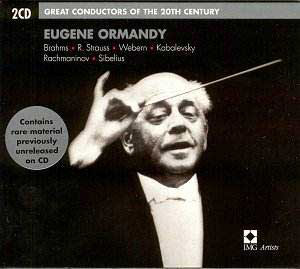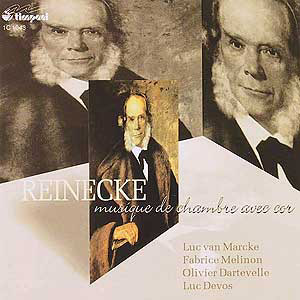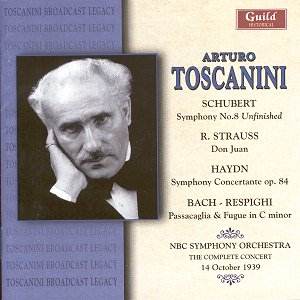 Composer: Great
Composer: Great
Works: Brahms: Symphony No. 4; Strauss: Don Juan; Webern: Im Sommerwind; Kabalevsky: Overture: Colas Breugnon; Rachmaninov: Symphony No. 2; Sibelius: The Return of Lemminkainen
Performers: Philadelphia Orchestra; Bavarian Radio Symphony Orchestra; Eugene Ormandy, conductor
Recording: Brahms Symphony No. 4: 25 October 1967, Town Hall, Philadelphia; Strauss Don Juan: 12 June 1959, Kongressaal, Deutsches Museum, Munich; Webern Im Sommerwind: 17 February 1963, Town Hall, Philadelphia; Kabalevsky Overture: Colas Breugnon: 15 November 1965, Studio P1, Bavarian Radio, Munich; Rachmaninov Symphony No. 2: 18-19 December 1973, Scottish Rite Cathedral, Philadelphia; Sibelius The Return of Lemminkainen: 20 February 1978, The Old Met, Philadelphia
Label: EMI Classics/IMG Artists
Eugene Ormandy remains one of the towering figures in the 20th-century orchestral milieu, his interpretations embodying a distinct blend of emotional depth and technical precision. This 2CD retrospective, part of the “Great Conductors of the 20th Century” series, captures the essence of Ormandy’s significant contributions through a selection of pieces that not only highlight his conducting prowess but also reflect the broader orchestral traditions during his tenure. Each recording is a testament to his ability to draw out the best from his ensembles, making palpable the emotional core of each composition.
Among the standout works, Brahms’ Symphony No. 4 emerges with a robust yet nuanced character. Recorded in 1967, the performance is marked by a clear understanding of the symphony’s structural integrity. Ormandy’s handling of the outer movements is particularly noteworthy, as he maintains an exhilarating momentum while ensuring the thematic development is never overshadowed by sheer speed. The second movement, while perhaps lacking some of the lyrical introspection found in other interpretations, nevertheless showcases Ormandy’s skill at shaping phrases to create a compelling narrative arc. The sonic quality, enhanced by modern recording techniques, allows the Philadelphia Orchestra’s lush strings and powerful brass to resonate with a clarity that accentuates every nuance.
In stark contrast, Strauss’s “Don Juan,” recorded in 1959, presents a different challenge. The mono sound, while somewhat limiting in its spatial representation, does not detract from the orchestral brilliance that Ormandy commands. The pacing is judicious, allowing the music’s inherent drama to unfold with precision. However, certain subtleties in the more lyrical passages feel somewhat muted, as the recording does not fully capture the dynamic range one might expect from a stereo performance. Yet, the excitement and vigor of the piece remain intact, showcasing Ormandy’s affinity for Strauss’s dramatic style.
The inclusion of Webern’s “Im Sommerwind” is a refreshing addition, as it reveals Ormandy’s capacity for lesser-known repertoire. Conducting its premiere, Ormandy’s interpretation is both atmospheric and meticulously detailed, reflecting the work’s delicate textures while contrasting the more grandiose pieces in the collection. This performance stands as a significant contribution to the revival of Webern’s output, illustrating Ormandy’s keen insight into both the emotional and structural components of modernist music.
The orchestral brilliance continues with Kabalevsky’s “Colas Breugnon Overture,” where Ormandy leads the Bavarian Radio Symphony Orchestra with infectious energy and precision. The performance is marked by a vibrant articulation and rhythmic vitality that highlights the overture’s playful character, demonstrating Ormandy’s ability to foster a spirited engagement from his musicians.
Rachmaninov’s Symphony No. 2, captured in December 1973, is perhaps the crowning achievement of this collection. Ormandy’s interpretation is lush and expansive, with the Philadelphia Orchestra delivering an emotionally charged performance. The removal of previous cuts reveals the symphony’s full emotional trajectory, allowing listeners to experience the sweeping romanticism in its entirety. The Adagio, characterized by its rich harmonic language, flows seamlessly under Ormandy’s deft touch, encapsulating the work’s profound lyricism.
Sibelius’ “The Return of Lemminkainen” closes the set with an exhilarating flourish. Recorded in 1978, this performance embodies Ormandy’s deep connection to Sibelius’s music. The orchestration is robust, and the Philadelphia Orchestra’s execution is nothing short of thrilling. As the music builds to its climactic moments, Ormandy showcases his ability to balance power with finesse, ensuring that the symphonic narrative remains compelling throughout.
The engineering across these recordings is commendable, with each piece benefiting from a sound quality that enhances the listening experience. The clarity and balance allow listeners to appreciate the intricate interplay between sections of the orchestra, a hallmark of Ormandy’s meticulous rehearsal techniques.
Ormandy’s legacy as a conductor is richly documented in this collection, which not only affirms his status as a leading interpreter of the orchestral repertoire but also serves as a vital historical record of the orchestral sound of the 20th century. Each performance captures a moment in time, showcasing the artistry of both the conductor and the orchestras he led. This anthology is an essential listen for those seeking to understand the evolution of orchestral performance and the enduring impact of Eugene Ormandy.



